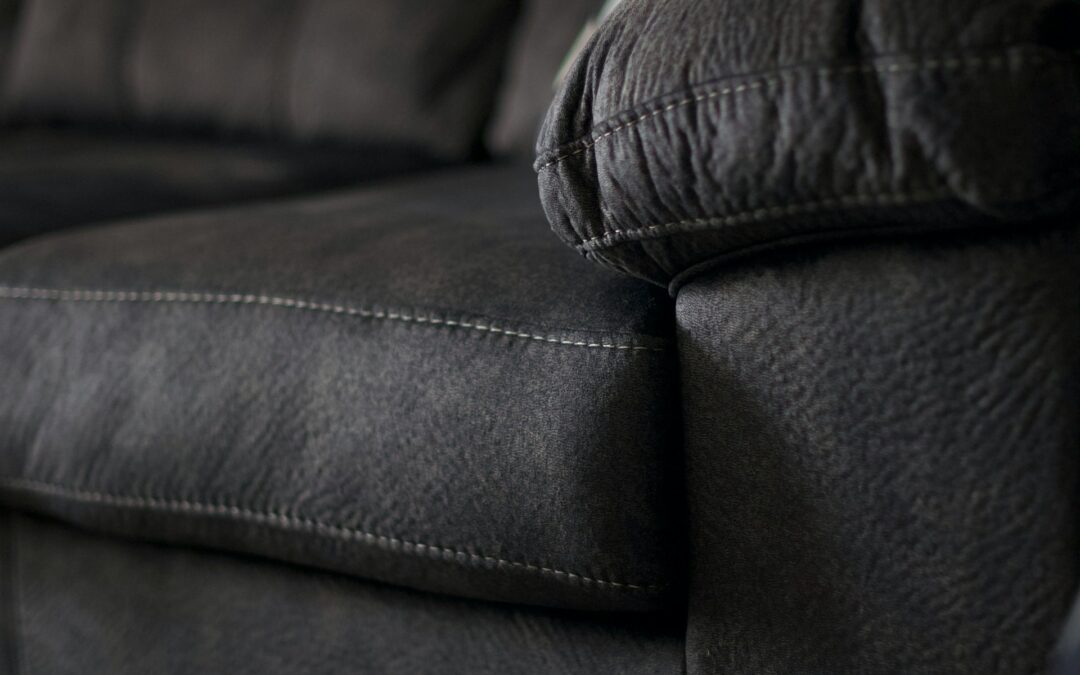Upholstered furniture adds comfort and style to homes and businesses in Edmonton. However, this appeal can quickly diminish when upholstery falls victim to common stains. Whether it’s a coffee spill during a busy morning or a pet accident that leaves a mark, these stains can detract from the beauty of your furniture. Understanding these stains helps in maintaining the enduring allure of your upholstery.
Different types of upholstery materials are prone to distinct staining issues. Fabrics like cotton or linen may absorb liquids more readily, while leather might show water stains if not treated quickly. According to Patrick Smith, Owner of Select Carpet Care, “Knowing your stains is the first step to maintaining beautiful upholstery. With the right knowledge, caring for upholstery becomes a straightforward task, preventing stains from becoming permanent eyesores.”
Regular attention to cleaning and maintaining upholstery aids in preserving both its appearance and longevity. By being proactive in stain prevention and responding swiftly to accidents, homeowners and businesses can keep their spaces inviting and attractive. This approach not only saves effort in cleaning but also ensures furniture remains a valued element in any setting.
Understanding Common Upholstery Stains
In both residential and commercial settings, upholstery frequently encounters stains that can be avoided with foresight. Coffee spills, ink smudges, and food marks are among the most common culprits. These stains can profoundly impact the appearance of furniture, creating unsightly blemishes that detract from its appeal. Different upholstery materials react differently to these stains.
Fabrics such as cotton and linen can absorb spills quickly, making prompt action critical. Conversely, materials like leather might resist liquid initially, but can develop water stains if not treated appropriately. Similarly, synthetic fabrics may seem more resilient but can still be stained by oils or dyes. Identifying these frequent stains equips homeowners and business owners with the ability to manage them effectively. As Patrick Smith, Owner of Select Carpet Care, states, “Knowing your stains is the first step to maintaining beautiful upholstery.”
Understanding how various materials react to different types of stains also helps in selecting suitable preventative measures and cleaning techniques. This knowledge assists in preserving the fabric’s integrity and colour, ensuring furniture remains an asset to office spaces and homes alike.
Effective Prevention Techniques
Preventing stains on upholstery requires deliberate actions and smart choices. Implementing simple strategies can significantly reduce the likelihood of permanent stains. One effective method is using protective covers and treatments, which act as a barrier against potential spills and messes. These can be particularly useful in high-traffic areas or for furniture that sees frequent use.
Practical tips to prevent stains include:
- Prompt Action: Address spills and accidents immediately to avoid staining.
- Covers and Slipcovers: Utilise washable covers to protect daily use furniture.
- Regular Maintenance: Vacuum upholstered surfaces regularly to remove dirt that can lead to staining.
- Food and Drink Rules: Consider limiting food and drink consumption around delicate furniture.
Treating upholstery with stain-resistant products can add a layer of protection. Such products can make it easier to clean spills before they become a problem. Immediate attention to spills is crucial, as the longer a stain sits, the harder it becomes to remove. This is especially important for businesses in Edmonton, where the frequent hustle of daily activities can lead to spills at any time.
By employing these preventive measures, homeowners and businesses can safeguard their upholstery investment, reducing the need for extensive future cleaning and maintaining a pleasant environment.
Best Cleaning Practices for Stains
When it comes to upholstery stains, prompt and effective cleaning is essential to prevent lasting damage. Each type of stain demands a specific approach to ensure removal without harming the fabric. General cleaning methods should be tailored to the type of stain and the material involved. For instance, a dry cloth can blot liquid stains to absorb as much as possible before they set.
For oil-based stains, applying a small amount of baking soda can help absorb excess oils. For ink stains, a cotton ball soaked in rubbing alcohol can be gently dabbed on the affected area. These simple techniques utilize household items to address minor stains before they become embedded in the fabric.
Here’s a handy guide to common household products that can assist in stain removal:
- Baking Soda: Effective for absorbing liquid and oil-based stains.
- Vinegar: Useful for general spot cleaning and deodorizing.
- Rubbing Alcohol: Effective for tackling ink or dye stains.
As Patrick Smith points out, “Proper cleaning can save upholstery from permanent damage.” Following recommended cleaning techniques ensures furniture maintains its charm and usefulness.
Professional Upholstery Care Benefits
While minor stains can often be addressed with household methods, there are situations where professional upholstery cleaning is necessary. Stubborn stains, ingrained dirt, and delicate fabrics often require expert attention to prevent damage. Professional cleaners possess the expertise and equipment to handle complex stains and deeply embedded dirt, ensuring thorough restoration without compromising fabric integrity.
Routine professional maintenance helps maintain upholstery’s appearance and extends its life by utilizing advanced cleaning techniques that are unlikely to be replicated at home. Regular cleaning also reduces allergens and improves air quality, contributing to a healthier indoor environment.
Patrick Smith states, “Professional care ensures upholstery looks its best and lasts longer. This is particularly beneficial for businesses seeking to maintain a professional image or for homeowners looking to keep their furniture in pristine condition. Professional services can assess specific cleaning needs and apply suitable treatments, guaranteeing optimal results.”
Key Takeaways for Upholstery Stain Prevention & MaintenanceConclusion
Preventing and managing upholstery stains is an ongoing effort that combines knowledge, swift action, and the right techniques. Recognizing common stains and understanding their effects on various materials empowers homeowners and businesses to maintain their furniture’s quality and appearance.
Employing preventive measures, like using protective covers and giving immediate attention to spills, significantly reduces the occurrence of lasting stains. In the event of accidents, sticking to effective cleaning methods ensures minor issues do not escalate into permanent damage. When situations demand professional intervention, engaging reputable services can restore upholstery to immaculate condition.
For those in the Edmonton area seeking dependable assistance with upholstery care, Select Carpet Care, a carpet cleaning company, offers professional expertise tailored to residential and commercial needs. Consider reaching out for a consultation at 587-290-2439 to discover how their services can enhance and preserve the beauty and functionality of your upholstery.





